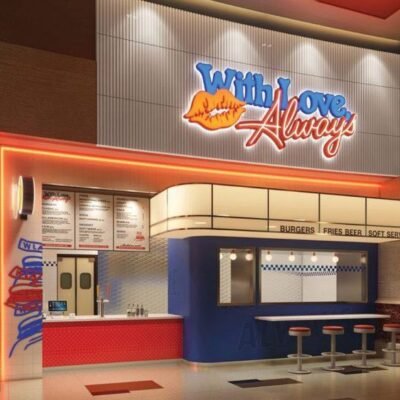Monday, June 16, 2025 | 2 a.m.
Editor’s note: Este artículo está traducido al inglés.
Merely 30 miles from the bright lights of the Las Vegas Strip sits Boulder City, a quaint town with a near-perfect view of the shining stars overhead.
The city, and much of Nevada, is looking to capitalize on its dark skies through various efforts to reduce local light pollution, including a new toolkit to promote education and outreach.
“There are very few places left in the country where there is so little artificial light that you can literally see right through the Milky Way with the naked eye … but you can right here in Nevada,” said Shaaron Netherton, executive director of environmental group Friends of Nevada Wilderness.
Netherton said it will take a partnership of passionate stargazers to conduct the public education and outreach needed to help people understand the negative impacts of excessive artificial light and how to reduce it.
The Nevada Division of Outdoor Recreation and Travel Nevada launched its Dark Skies Toolkit this month — a resource designed to help communities, agencies and land managers reduce light pollution, adopt dark-sky friendly practices and encourage dark sky tourism.
The tool kit includes a step-by-step guide to applying for Nevada Starry Skies certification, an overview of the importance of dark skies, best lighting practices based on the Five Principles of Responsible Outdoor Lighting, and outreach ideas for approaching schools, residents and businesses.
Dark sky and astro-tourism have grown as an industry in recent years as conversations about light pollution have increased. Light pollution is “the human-made alteration of outdoor light levels from those occurring naturally,” according to DarkSky International, a global organization dedicated to preserving dark skies that has certified over 200 Dark Sky Places in 22 countries.
Building exterior and interior lighting, advertising, commercial properties, offices, factories, streetlights and illuminated sporting venues all contribute to light pollution, which has been shown to have negative impacts on human and animal health.
Light pollution can disrupt people’s circadian rhythm, which regulates sleep and overall well-being. That can lead to various health issues, such as sleep disorders, mental health challenges, heart disease, immune system dysfunction, metabolic disorders, obesity and even cancer.
Animals, especially nocturnal species, can also be thrown off by the artificial light, causing changes in natural behaviors like migration patterns or hunting, Netherton said.
Billion-dollar tourism industry
Nevada is trying to cash in on the interest in dark skies.
Under Senate Bill 52, which was signed into law by former Gov. Steve Sisolak in 2021, a locally led “Dark Sky Designation” program was established to protect and enhance the state’s natural night skies “for their ecological, astronomical, cultural and economic importance,” according to a 2021 release from the governor’s office.
“From Lake Tahoe to Beatty to Ely, Nevada’s extraordinary dark night skies provide ample opportunity for stargazing, and this bill is a reflection of the state’s commitment to protecting our bountiful and beautiful natural resources,” Sisolak said in a 2021 statement. “The ‘Dark Sky Designation’ will help continue our focused efforts on improving our economy by helping to create opportunities for jobs and recreation businesses.”
A 2019 study from Missouri State University predicted that the Colorado Plateau — which encompasses parts of Arizona, Colorado, New Mexico and Utah — will rake in over $5.8 billion over the next 10 years from nonlocal tourists visiting for the region’s dark skies. The tourists’ expenditures are expected to generate $2.4 billion in higher wages, create over 10,000 additional jobs each year and increase visitor counts to national parks within the region year-round.
Only two places in Nevada hold certifications from the DarkSky International: Great Basin National Park near the Utah border and the Massacre Rim Wildlife Study Area in the northwest corner of the state.
The Nevada Department of Recreation, because of Senate Bill 52’s passage, also launched the Nevada Starry Skies Certificate program, which recognizes businesses, schools, tribal governments, homeowners associations, parks, municipalities and unincorporated communities for making infrastructure changes to mitigate light pollution and educate others on the importance of protecting dark skies.
In 2023, a group of state agencies, nonprofit organizations, land management groups and the National Park Service created Park to Park in the Dark — the first astronomy route connecting the two International Dark Sky Parks and passing through five rural towns rife for astro-tourism.
The 300-mile route begins in either Death Valley National Park, just over the California border, or Baker, near Great Basin, then winds through towns like Beatty, Tonopah and Ely.
Park to Park in the Dark is touted by the National Park Service as “the starry-est route in America,” and officials believe the state can further capitalize on its wide swaths of dark skies.
Travel Nevada also promotes 14 dark sky locations that include places like the Tonopah Stargazing Park and Boundary Peak Wilderness in the Inyo National Forest bordering California.
“Nevada’s darkest skies are home to its brightest lights. In towns like Ely, Tonopah and Gerlach, light pollution is scarce, and travelers only need to look up to spot entire constellations, the Milky Way and thousands of stars,” said Rafael Villanueva, CEO of Travel Nevada. “We encourage residents and visitors to get a little out there and enjoy our natural light show.”
Certifiably dark
The Lincoln County Department of Tourism in Northern Nevada is looking for a DarkSky International certification for Spring Valley State Park, Netherton said, and Pahrump has also taken steps to reduce light pollution and incorporate astro-tourism into their economy.
Netherton said the Dark Skies Toolkit and other state or local efforts to reduce light pollution are welcome, especially because “Nevada is home to some of the most spectacular night skies in the world.”
Take Boulder City, for example.
With its smaller population and wide-open space, stargazers have plenty of opportunities to catch a glimpse of an unobstructed night sky — all only a short drive away from Las Vegas.
In 2023, Boulder City received a $1.9 million grant from the U.S. Economic Development Authority to update the city’s light fixtures with bulbs that produce a “warmer” light compared with the city’s old LED lights. It’s a move that officials said would cut down on light pollution, protect nocturnal wildlife like bats, and lure stargazers.
The city began retrofitting its lights in 2023 which was 63% complete as of January, having installed 929 of the 1,460 lights it received. City officials said the project is an important step in achieving a Dark Skies Community Certification from the International Dark Skies Association. If approved, Boulder City would become one of Nevada’s first designated Dark Skies communities.
Because of the presidential administration change, the light retrofitting project funding has been put on hold for now as the Economic Development Authority “evaluates the program’s future,” said Joshua Hardy, a utilities business analyst at Boulder City.
He added that the city is “still kind of working through swapping out all of our old lights with the dark skies lighting fixtures as much as we can before the funding runs out or it’ll be removed at all.”
“With the EDA investment and our lighting infrastructure, we just thought it was a great step toward our goals of preserving the dark skies of our community and the whole Lake Mead National Recreational Area, especially since our motto is ‘Clean, Green Boulder City,’ we wanna apply that to everything,” Hardy said. “We’re just trying to do the best that we can do on our part. Boulder City is a great place to visit and we will continue to take initiatives like dark skies to make it even better.”





